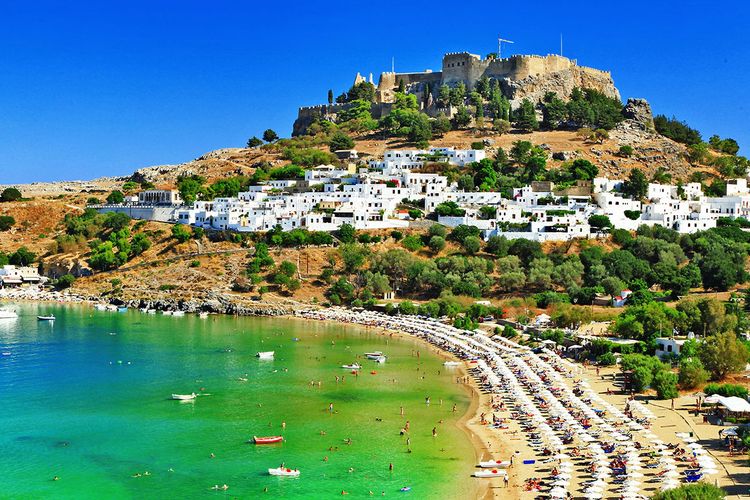The capital of the Dodecanese, the island of Rhodes played an important role from the 5th to the 3rd century BC, before being successively ruled by the Romans, Byzantines and Ottomans, not forgetting the Knights of St John, who left their mark by building the medieval city of Rhodes and various other sites on the island.
Famous for their superb beaches, the Dodecanese islands, the easternmost and southernmost archipelago in the Aegean Sea, stretch along the west coast of Turkey. This geographical location means that they enjoy very favourable weather conditions all year round. Rhodes is reputed to be the sunniest island in Europe, offering a delightful mix of beautiful beaches and remarkable remains, direct testimony to the various influences that have forged its unique cultural identity. It is also a mountainous and agricultural island, where the interior remains essentially wild and austere, although there are still some beautiful, traditional and picturesque villages. Rhodes is Greece's third-largest island, so the best way to discover its many facets is to hire a car, or even a scooter, and set off along the roads in search of what makes Rhodes different from the other Greek islands.
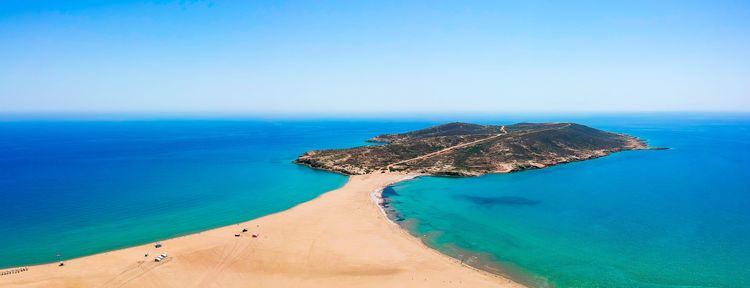
Off to the southern tip of Rhodes
- © Oleg_P / ShutterstockRhodes: an island of diverse origins
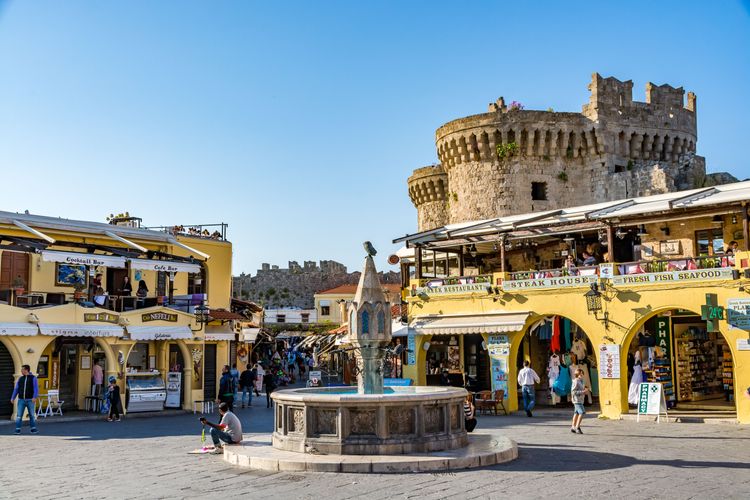
Rhodes Old Town, where it all begins
- © Tomasz Czajkowski / ShutterstockBut beyond the architectural remains that bear witness to the different cultural influences, Rhodes is and remains Greek in its flesh, in its genes and in its general mood, an undeniable filiation that is even reinforced by the presence of the surrounding Turkish coastline, like a daily challenge to history and modern geopolitics. These diverse origins can be discerned as you travel around the island, from the menu of a traditional taverna, admiring the architecture of the old town of Rhodes or the remains of a forgotten fortress in the south, between a minaret still standing and a small whitewashed chapel, and in the attitudes of the Rhodians, true to themselves in the villages of the island's interior...

Influences intermingle in Rhodes old town
- © Vladimir Zhoga / ShutterstockPractical info
🚌 Renting a car in Rhodes
It couldn't be easier, with rental companies on hand from the moment you arrive at the airport, as well as in Rhodes and all the island's major seaside resorts. The best thing is to rent in advance online, so you can hit the roads of Rhodes as soon as you arrive.
From coast to coast, the true nature of Rhodes
The island's highly protected east coast offers a mosaic of landscapes made up of orange groves, olive groves and stretches of coastline with a succession of large, sunny, sandy bays and more secluded rocky coves. The more airy west coast begins in the north with a bustling tourist area before giving way to a more fertile landscape of vineyards and meadows.
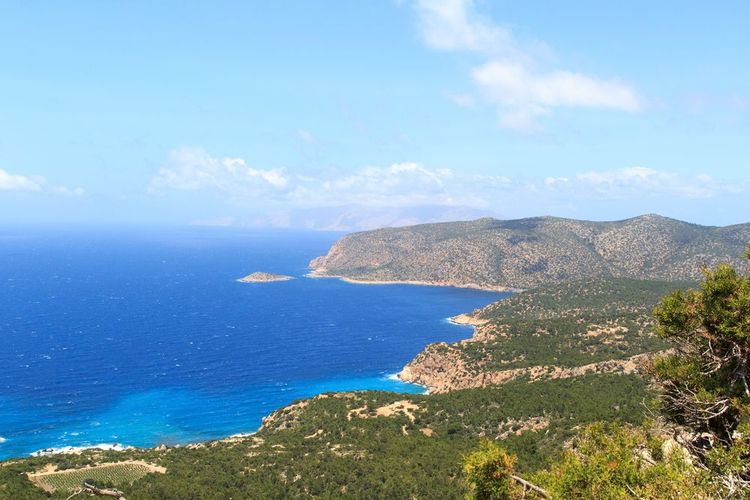
Panoramic view of Rhodes' west coast
- © JohannesS / ShutterstockIt is in this northern part of the island that we find Rhodes' two must-see natural sites: the Seven Springs (Epta Piges), an admirable setting of forest, waterfalls and lake, and the Valley of the Butterflies (Petaloudes) which, from June to September, offers the incredible spectacle of thousands of butterflies attracted by the golden resin of the liquidambars.
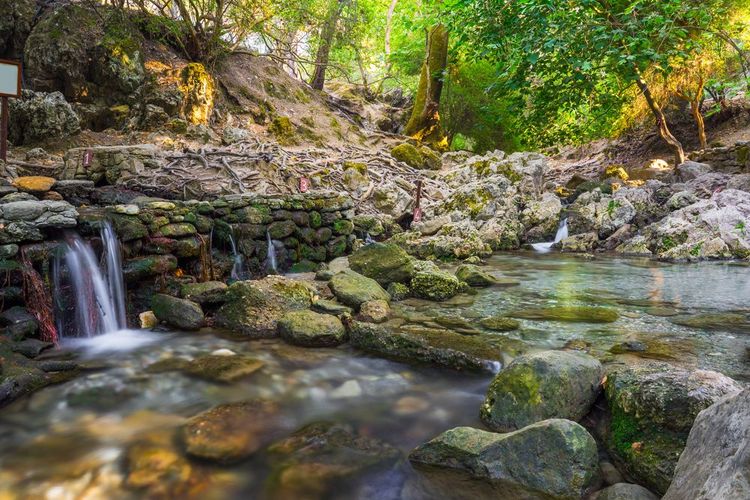
Les Sept Sources, Rhodes
- © ian woolcock / ShutterstockOn the roads of Rhodes, but off the beaten track
Towards the middle of the island, the west coast becomes wild and steep. It towers high above the sea in a Mediterranean atmosphere, enveloped in the scents of vast pine forests, and offers admirable panoramic views.
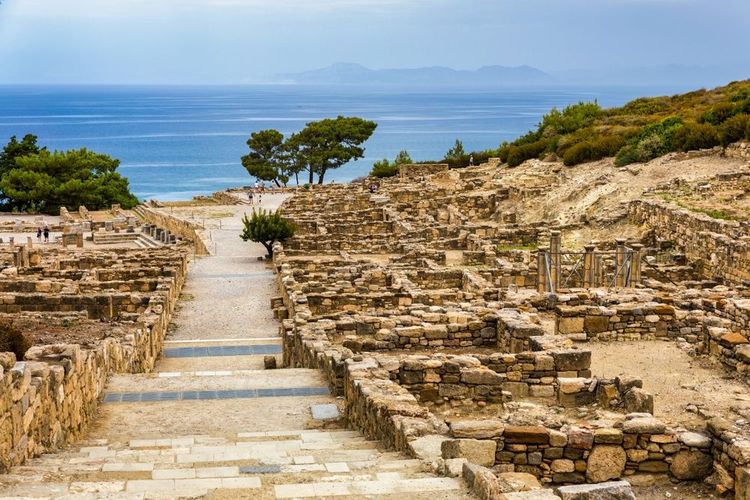
Ancient Kamiros, deserted
- © DaLiu / ShutterstockIt's against this backdrop of adventure that we discover the sites of Kamiros and Monolithos, just as magical although wilder and less touristy than Lindos or Rhodes. Imposing medieval fortresses enthroned atop their rocky spurs, these castles from another age offer the magic of their silhouettes standing out against the sea.

Sunset on the west coast of Rhodes
- © Mistervlad / ShutterstockAnother acropolis, Mount Philerimos, seat of ancient Ialyssos, rises in the west of the island, as does Kamiros, whose remains blend into the splendid Mediterranean vegetation. The surrounding hills, pockmarked with tombs, are said to be the largest cemetery in the Greek world. A sight not to be missed, especially at sunset.
In the south, welcome to wild Rhodes
The south of the island is the wildest part of Rhodes, with large, almost deserted beaches to the east, stretching as far as Cape Prassonissi, set against a backdrop of vast, sun-scorched moors that have become, right up to the seashore, the kingdom of goats.
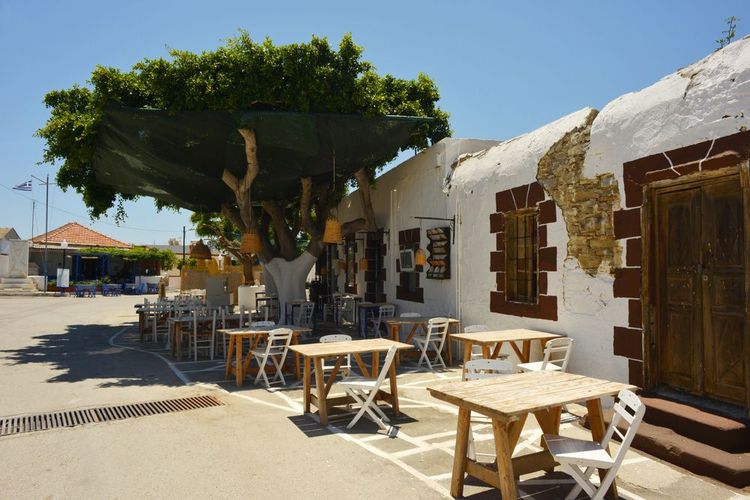
Traditional tavern at Kattavia in southern Rhodes
- © Sinuswelle / ShutterstockKattavia, the 'capital' of the south, was once renowned for its weaving, but it is above all the precious miraculous icon of the Virgin of the Moni Skiadi monastery that attracts the rare visitors to the region today. With the exception, of course, of windsurfers and kitesurfers who head for the southern tip of the island and the astonishing site of Prassonissi, where a spit of sand divides the bay into two stretches of crystal-clear water swept by the sea breeze.
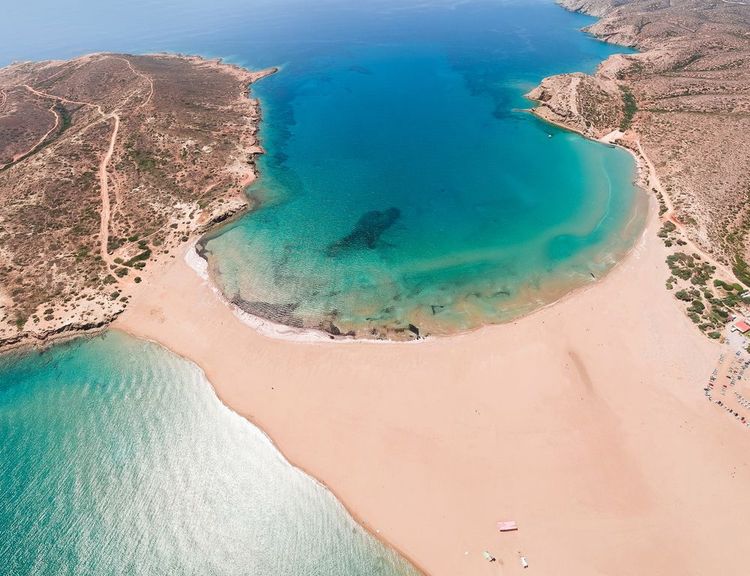
Prassonissi, just south of Rhodes
- © Oleg_P / ShutterstockStop off at the pits, or rather, the most beautiful beaches on Rhodes
You'll need to know how to take breaks on the roads to Rhodes: just the thing, as its beaches are some of the most beautiful in the Aegean, and provide plenty of opportunities to stop and soak up the sun and the sea!
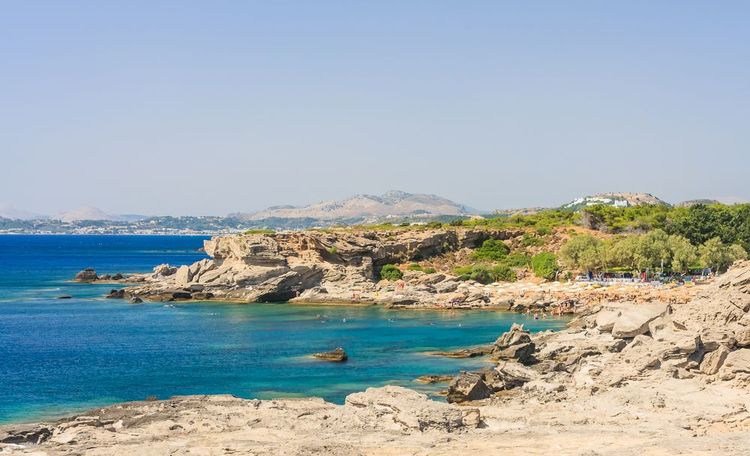
Pretty cove near Kallithea
- © nikolpetr / ShutterstockSometimes of white pebbles, sometimes of fine sand, these beaches have led to the construction of well-developed seaside resorts in the north of the island, along the bay of Triante on the west coast or those of Rhodes and Kallithea on the east coast (Agia Marina, Kallithea, Faliraki...).
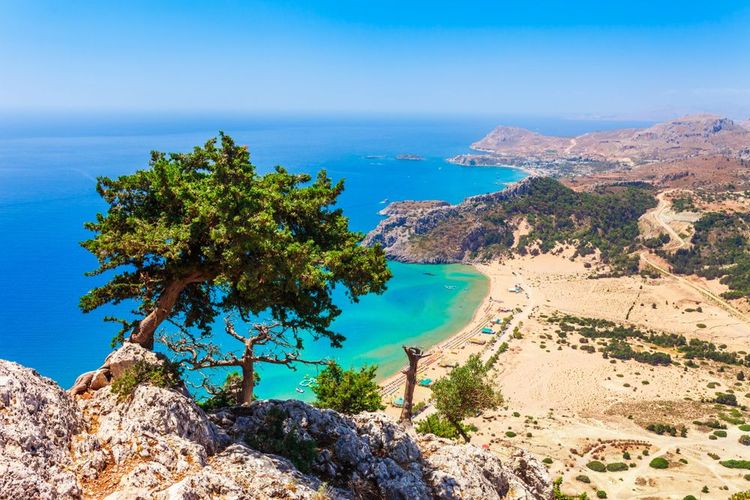
Tsambika and the east coast of Rhodes
- © Oleg_P / ShutterstockThe most beautiful and famous of all these beaches is undoubtedly Tsambika, on the east coast, a few kilometres from Kolymbia. Dominated by a small monastery perched more than 300m above the waves, it offers a turquoise lagoon of admirable transparency, truly worthy of the most beautiful beaches in the Caribbean.
A word of advice: if you want to make the most of these dreamy beaches away from the crowds, you shouldn't reach them by road... but by sea! You can hire a boat, with or without a skipper, to take you around Rhodes in complete freedom.
 Rhodes
Rhodes
⛵ Discover Rhodes from the sea
Embark on an adventure in Rhodes by hiring a boat!Where to sleep?
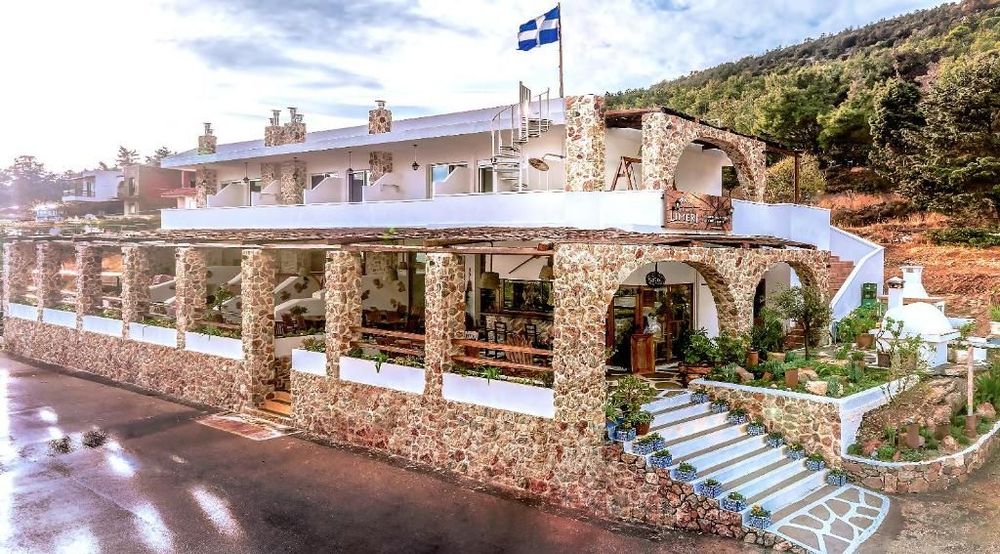 Rhodes
Rhodes
